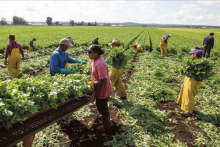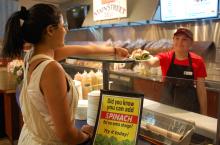Foreign Worker Program Fills Labour Gap in Agriculture
By Samantha McReavy
The Seasonal Agricultural Worker Program (SAWP) fills a significant labour shortage in Ontario’s agri-food system and is a critical part of production here, says a University of Guelph researcher.
Prof. Sara Mann, Dept. of Management, at the University of Guelph, says the program has a significant social and economic impact on Canadian farmers, on the workers’ home countries and on Ontario’s agriculture and agri-food sectors.

